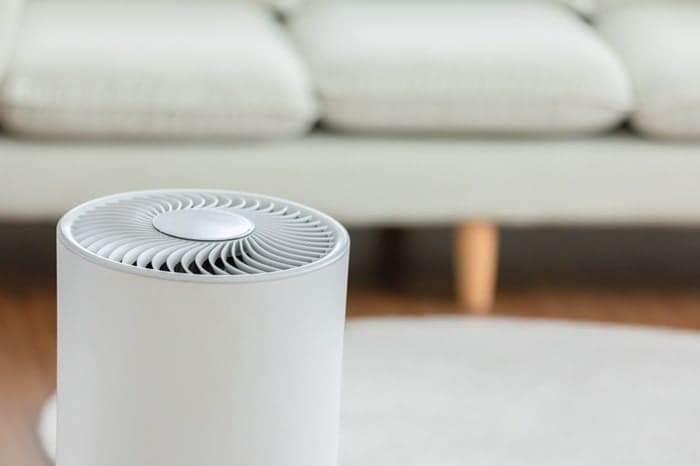Indoor air quality plays a pivotal role in managing and controlling asthma symptoms. With the average person spending a significant portion of their time indoors, the presence of pollutants like dust mites, pet dander, mold, and pollen can exacerbate asthma conditions, making it crucial to understand and implement strategies for improving air quality. This article aims to explore the relationship between indoor air quality and asthma, highlighting the potential triggers found within the home and offering practical advice on how to mitigate these risks.
Through a combination of research-backed strategies and easy-to-implement changes, individuals can create a healthier indoor environment that supports respiratory health and reduces the frequency and severity of asthma flare-ups.
The Role of Air Purifiers and Filters
Investing in an air purifier can be a game-changer for individuals with asthma. Air purifiers equipped with HEPA filters can capture a significant proportion of airborne allergens, including pet dander, pollen, and dust mites. Positioning these devices in living spaces and bedrooms creates cleaner indoor air environments, potentially reducing asthma symptoms and flare-ups. You can find an air purifier for asthma by consulting with your doctor to determine the best type of purifier for your specific needs. In addition to air purifiers, regularly replacing and maintaining filters in HVAC systems can significantly improve indoor air quality.
Heating, Ventilation, and Air Conditioning (HVAC) systems circulate air throughout homes, making them pivotal in maintaining indoor air quality. Regularly replacing HVAC filters with high-efficiency particulate air (HEPA) filters and ensuring the system is in good working order can significantly improve the quality of air, benefiting individuals with asthma.
Understanding Asthma and Indoor Air Quality
Asthma, a chronic condition affecting the airways in the lungs, can be significantly influenced by the quality of air within indoor environments. Triggered by various airborne particles, such as dust, mold, and pet dander, asthma symptoms can range from mild to severe. Given the amount of time people spend indoors, it becomes essential to recognize how these triggers contribute to asthma exacerbations and the importance of maintaining clean indoor air.
Improving indoor air quality involves identifying and mitigating the sources of pollutants. Regular cleaning, proper ventilation, and the use of air purifiers are effective ways to reduce the concentration of asthma triggers. For individuals with asthma, these measures can mean the difference between a normal day and a battle with difficult symptoms, highlighting the direct impact of air quality on health and well-being.
Strategies for Reducing Indoor Asthma Triggers
Dust mites are a common trigger for asthma attacks. Encasing mattresses and pillows in allergen-proof covers, washing bedding in hot water weekly, and keeping surfaces clutter-free can dramatically reduce dust mite prevalence in the home.
Mold thrives in moist environments, making it a notable asthma trigger. Using dehumidifiers to keep indoor humidity levels between 30-50%, fixing leaks promptly, and ensuring good ventilation in bathrooms and kitchens can help prevent mold growth and protect respiratory health.
Enhancing Ventilation
Opening windows and doors when weather permits not only refreshes indoor air but also reduces the concentrations of indoor air pollutants. However, for people living in areas with high outdoor pollution or during pollen seasons, alternative strategies like using trickle ventilation systems or mechanical ventilation can provide the benefits of fresh air without introducing new triggers.
Cooking can introduce a significant amount of moisture and odors into the home, which can aggravate asthma symptoms. Using stove vents or exhaust fans when cooking helps to remove these pollutants directly from the source, improving indoor air quality and contributing to a healthier living environment.
Education and Awareness
Awareness of the potential sources of asthma triggers within the home is the first step toward creating a safer environment. Educating household members about the importance of practices such as smoking outside, using fragrance-free cleaning products, and avoiding the use of aerosols can lead to collective efforts to reduce asthma triggers.
Many communities offer resources and programs aimed at helping individuals improve indoor air quality. From workshops on asthma management to home assessments and recommendations, these resources can provide invaluable support and information, empowering individuals and families to take proactive steps in managing asthma more effectively. Furthermore, consulting with healthcare professionals and discussing personalized strategies for managing asthma triggers can provide additional guidance in creating a healthier indoor environment.

Indoor air quality is an essential factor to consider when managing asthma. By taking proactive steps such as investing in air purifiers, regularly maintaining HVAC systems, and implementing strategies for reducing common triggers like dust mites and mold, individuals can significantly improve their indoor air quality and overall respiratory health. With education, awareness, and simple changes, individuals can create a safer and healthier environment for themselves and their loved ones. It is crucial to prioritize indoor air quality in managing asthma to promote better overall well-being. This holistic approach to managing asthma can greatly impact the frequency and severity of symptoms, leading to a better quality of life for those with this chronic condition. It is important to stay informed and make conscious efforts to improve indoor air quality for individuals living with asthma.


